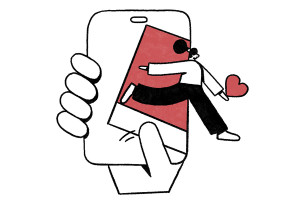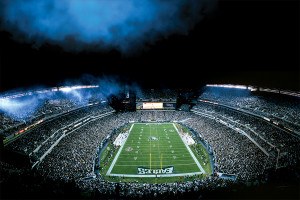The Vanderbilt Athletic Model Could Save Penn State
If you are looking for one of the best examples of irony in the sausage factory that is big-time college athletics, go directly to Gordon Gee, bow-tied president of THE Ohio State University and a quotation machine. In the spring of 2011, when it became clear that then-Buckeyes football coach Jim Tressel had covered up his knowledge of players’ trading memorabilia for cash and prizes, Gee was asked whether he intended to fire Tressel.
Keeping true to his declaration that he doesn’t “take [himself] very seriously,” Gee replied, “I hope he doesn’t fire me.” It was a joke about the power wielded by the school’s highest-paid employee and a telling commentary on the influence of major college sports programs on the universities they represent. The ironic thing is that eight years earlier, while president of Vanderbilt, Gee fired the school’s athletic director and brought the department under the control of a university VP, effectively thwarting any opportunity for the Commodores’ sports pursuits to run counter to the school’s educational mission. By joking about Tressel’s influence, Gee not only showed the difference between the focuses of Vandy and OSU (duh!); he also made it clear that he could never affect change like he did in Nashville along the banks of the Olentangy.
And that’s too bad. Because the bigger picture of the crisis facing Penn State is the overwhelming authority enjoyed for decades by athletics programs at schools like PSU, Ohio State and dozens like them around the country. If Penn State wants to prove that it has learned something from the horrible actions of its senior administrators and impotent Board of Trustees, it should–in addition to de-emphasizing the football program, as I advocated last Thursday–fold the athletic department into the university at large and treat it as it does the Colleges of Engineering, Nursing and Education. It should receive a budget, answer to the same protocols as does the rest of the school and no longer be able to operate as a stand-alone athletic association.
Once that is accomplished, Penn State administrators and Board members must become proselytizers for that way of doing business, beginning its Big Ten Conference brethren and moving on from there. If Penn State understands the true magnitude of this scandal, it must know that the same culture that allowed boys to be raped on campus cannot continue.
Before you scoff that Vanderbilt’s model would fail at Penn State, because the Commodores are Southeastern Conference doormats and have nothing to lose by bringing their athletics programs under the auspices of the university at large, consider the following:
- Vanderbilt’s football team has played in bowl games in two of the last four seasons, the first time that has ever happened
- Vandy’s men’s basketball team has put up seven 20-win seasons since 2003, made the Sweet 16 two times and had three players drafted by the NBA in June.
- The Commodore baseball team has made eight appearances in the NCAA regional tourney since 2003 and reached one College World Series
- The VU women’s basketball team has made the NCAA tourney every year since 2003, and the cross-country team won its first-ever SEC title in 2011.
- Vanderbilt athletes have an aggregate 3.0 GPA and are integrated into the university community, rather than kept separate in athletic dorms.
In other words, the thing works. And emulating Vanderbilt wouldn’t be the worst thing in the world, since Vandy is rated 17th among national universities by U.S. News & World Report. Penn State must make sure its athletic programs are able to thrive within the framework of a sturdy university model, not as adjunct entities designed to cull the finest athletes from the prep herd and train them to perform for the greater good of the school’s promotional and fundraising efforts.
By putting the athletic department administrator into the university hierarchy, rather than allowing him to direct a fiefdom that answers to nothing but the bottom line, Penn State would reclaim its credibility and be able to make the argument that it was indeed trying to prevent any kind of future abuse by athletic department personnel, whether pecuniary or the kind of tragic behavior in which Sandusky engaged. Further, the athletes who sign on to attend the school will have a chance at a true collegiate experience, complete with activity within the university community and the time to major in programs designed to educate and prepare them for success after graduation, rather than merely taking courses that permit them to remain eligible.
There has been a lot of talk about “healing” and “moving on” since the damning evidence contained in the Freeh Report was made public last week. In order for that to happen, Penn State must make drastic changes in its relationship with athletics. Folding the department into the university at large is a perfect way to do that. The Board of Trustees should stop worrying about statues and start the hard, humbling work of admitting the school has a sports problem and taking the necessary steps to rectify it.
It is Penn State’s only chance to regain credibility.
SUCKER PUNCHES
- Kwame Brown, Dorell Wright and Nick Young are fine backup pieces on a good team. On the 2012-13 Sixers, each will be asked to perform key roles. There are probably more changes coming, but this team is nowhere near ready to contend in the East.
- Because Chaminade beat Virginia back in ’82, and Valparaiso upset Mississippi in 1998, it stands to reason the 2012 Olympic men’s basketball team might defeat its 1992 counterpart in a one-time showdown. Might. But comparing this squad to the Greatest Team in Sports History is asinine. The real Dream Team is worlds ahead of its ’12 counterpart, thanks to overwhelming talent, killer instinct and professional approach.
- The idea that Cole Hamels is going to be traded for prospects and then re-sign with the Phillies is hilarious. If he isn’t going to accept a five-year deal now, what makes anybody think he’ll want one in five months? Once he’s gone, he’s gone. It’s going to take at least a six-year deal to keep him, and that seems like something the Phillies aren’t willing to offer. Or are they?


